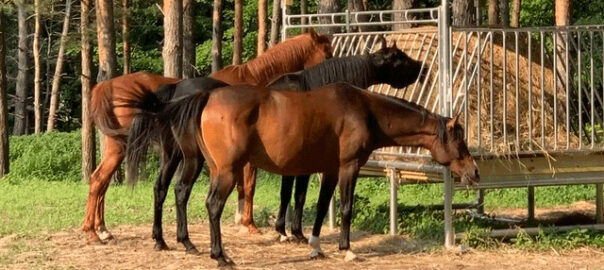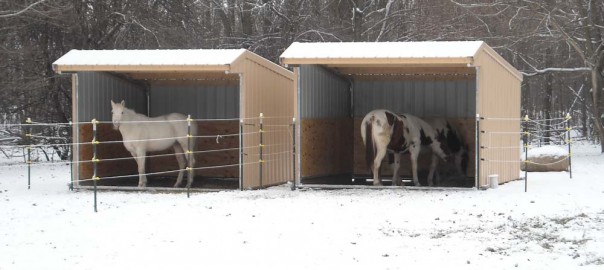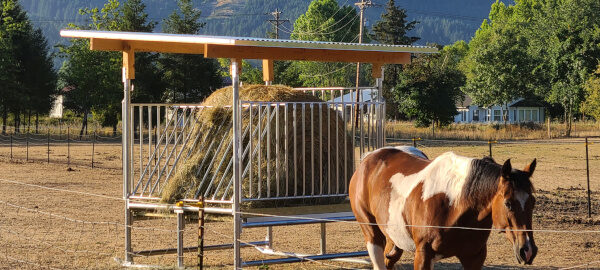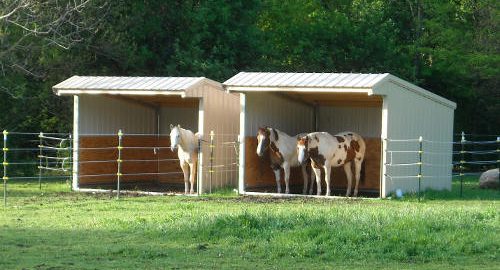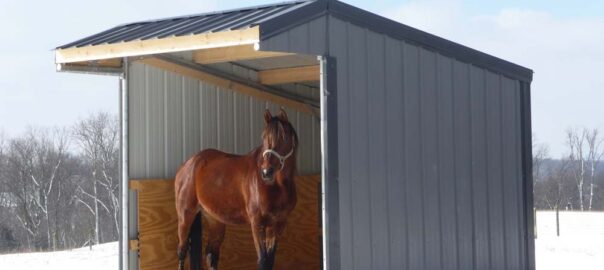Feeding your horses efficiently is essential for both horse health and your bottom line. If you’re tired of seeing hay trampled, wasted, or soiled, a hay saver feeder is a great solution. Designed to reduce hay waste and improve feeding conditions, hay saver feeders offer many benefits for horse owners.
1. Reduce Hay Waste by Up to 30% or More
Traditional feeding can lead to significant hay loss as horses pull hay to the ground, where it gets trampled or soiled. Hay saver feeders are designed to contain loose hay while still allowing horses to graze. This minimizes the amount of hay that ends up on the ground – saving you money in the long run.
2. Keeps Hay Clean and Dry
Our hay saver feeders are elevated to allow moisture to escape while keeping hay off muddy ground. It also has a floor in it, which keeps your hay bale off of the ground and fresh. You can also easily add a roof to help protect hay from the elements. This can reduce the risk of mold and contamination of the hay.
3. Supports Horse Health
Cleaner, fresher hay means better horse nutrition. When hay stays unsoiled, horses are more likely to eat their fill. The patented fold-down grills of our horse hay feeder are designed to make it impossible for your horse and animals to bury their head into the bale, thus eliminating breathing problems from inhaling hay dust.
4. Saves Time and Man Power
Less wasted hay means fewer trips to the field to replenish it. Hay saver feeders often require less maintenance and refilling, freeing up time for other tasks. And, because they help keep hay more contained, there’s less cleanup needed. In addition, the grill on our hay feeder can be locked into the upright position to make it safe for the horse and animals when you are loading a new hay bale. This feature also allows you to discontinue feeding at any time, and it makes this hay feeder a breeze to clean out
5. Durability and Long-Term Hay Savings
Our hay saver feeders are built from sturdy materials making them resistant to rust, weather, and horse wear-and-tear. While the initial investment may be higher than basic feeders, the reduction in wasted hay often leads to a return on investment within a single season.
6. Environmentally Friendly
By reducing hay waste, you’re also reducing your overall hay demand, which can help conserve resources and reduce the environmental impact of hay production and transport. Fewer trips to haul and distribute new hay also means reduced fuel usage.
A Smarter Way to Feed Your Horses
Whether you’re managing a small farm or a large-scale operation, a hay saver feeder is a smart, cost-effective tool to improve your horse feeding. It’s a win-win: your horses get clean, consistent access to hay, and you reduce costs, waste, and labor.
Looking to upgrade your feeding system? A hay saver feeder might be your best investment this season. Learn more about our Hay Saver Feeders.
